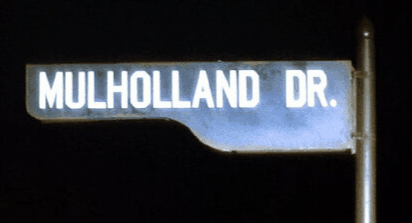1999 : An Audiodyssey
I intend Zones to be a subjective audio-visual experience that reaches the viewer at an inner level of consciousness, just as music does. You’re free to speculate as you wish about the philosophical and allegorical meaning of the work. Stephen Hurrell (1999)
‘It’s been a honeymoon – Can’t take no mo.’ Steve Reich City Life (1995)
Taken literally, Audiology is concerned with the rehabilitation of visual and balance disorders. In Zones, this is more quixotically applied to the discoveries arrived at by this type of scientific investigation, to their influence on human feelings, and more generally to situations that reflect the same spirit of discovery. Zones intimates an urban space through a series of sounds, the immediate visual environment, and historical knowledge offered to the passenger. What is created, in effect, are five vignettes concerning the River Clyde, the complex interactions between the passenger’s preconceptions, their cognitive apparatus, the river (with its own dynamics and laws of motion) and the social, political and economic logics of industrial and technological change linking the zones.
Structurally, there is an interconnection between microcosm and macrocosm. A large-scale integration of hundreds of thousands of biological microelectromechanical devices, the inner ear performs remarkable signal processing, detecting motions of the eardrum on the order of picometers much smaller than the diameter of a hydrogen atom. Seasickness easily results from the erratic stimulation to the brain from sensory receptors prompted by constantly changing movement as fluid in the ear’s semicircular canals moves with the body’s motion. In this sense, Zones literally upsets the passenger’s sense of stability and place. On the other hand, Zones connects people through biological microelectromechanical devices and a tangle of wires, melting them into a sonic singularity. Rolling on the river, time and space are elasticised, as Zones occupies and fills heads with a complete, intimate experience. Uniting digital and analogue communication technologies, this emphasises the ways in which information is communicated and stored and the effect this has on our understanding and experience of space and time.
Glasgow’s history stretches back almost two thousand years to when the first settlement, a small salmon-fishing village, established itself at a crossing point on the banks of the River Clyde. Easy access to the western seaways ushered in an era of immense wealth for the capitalists of the city. Shaped by battles, worldwide trade and heavy industry, the Clyde became a truly International river built by genius, full of sound and fury, signifying the world. The Clyde was a torpid stream of life drifting through a resplendent landscape occupied by big cranes. Glaswegians swam in its waters, poled canoes, worked the pastures and the petrified forests along the banks, picked fiddleheads in the spring, and skated over its black ice in the winter. This was a lustrous chimera of sweat and steel jovially populated by workers tenderly crushed by the wheels of industry. People came from Milingavie on Saturdays, shopped in the town and met friends, and retreated to their council tax havens before nightfall. They were connected to one another – by the river.
In Zones, the ‘official’ history of the Clyde co-exists with more personal memories; drawing on the considerable role once played by the river in the lives of Glaswegians, offering tourists flight to West Coast holiday resorts. While Waverley makes the same journey today, the scene has changed dramatically. The shipyards have almost fallen silent and gone are the lines of cargo boats at quaysides. Unchanged are the Finnieston Crane and Dumbarton Rock, yet as ‘dead structures’ – their value being based on signification rather than use – they now only signify themselves. Given that tourists are interested in everything as a sign of itself, a new use has been found for the Finnieston Crane as an example of ‘Glaswegian Industry’ signifying ‘Glasgwegian Industriousness’. Those engaged in reading the riverscape as a sign system representing ‘Glasgwegianess’ must remain deaf to explanations that the City now flourishes on finance, oil exploration, electronics, telecommunications and IT. Of course, culture, leisure and tourism are equally major growth industries. Ironically, as they turn their backs on the river, uber-consumer Glasgwegians rapidly become tourists in their own town, sold on the narcissistic myths of the Second City. As it moves along a serpentine silver thread once a series of stagnant locks, Zones provides audio souvenirs of the mythical heroic period of a river uncorrupted by the banality of digital technology that drives today’s service industries. Yet, as they sail, passengers also hear scanner ‘grabs’ of conversations from live transmissions around the Clyde, intermingled with scripted dialogues based on personal, intimate exchanges. Hearing these conversations through headphones, they cannot distinguish the real from the fabricated, the past from the present, bringing new life to a river banked with self-referential myths.
As the sound and fury of the Clyde becomes part of its myth, dialogues increasingly take place invisibly – through electronic networks. “There seems to be something quite poignant about the empty river Clyde, which used to be so productive, noisy, a community in itself”, observes Hurrell. “Now the activities are hidden behind mirrored glass and the noise is contained and transmitted via technologies which leave no trace of physical human presence.” Accordingly, no sense of destination exists in the narrative sense, the five distinctive zones dovetail together perfunctorily, linked only by a sense of loss: of community, of jobs, of life, of industry, of presence, of ‘real’ interaction. While finding a melancholy grace in the empty river and in the lives of those displaced by change, being lost in the soundscape provided by the headphones echoes the virtual interaction made possible by IT. Hence, while Zones is a communal activity – a pleasure-boat trip – its passengers remain as isolated from each other by the headphones as they are connected. This echoes communication technologies in general, which bring us all together while keeping us apart. The important thing about Zones, then, is its open-endedness. Rather than simply harbour Glasgwegian nostalgia, Hurrell takes us on a generously scripted ride that gives equal berth to the river’s histories, leaving them alive and drifting as it weaves its tale of the Clyde’s cultural landscape.
Neil Mulholland
October 1999




